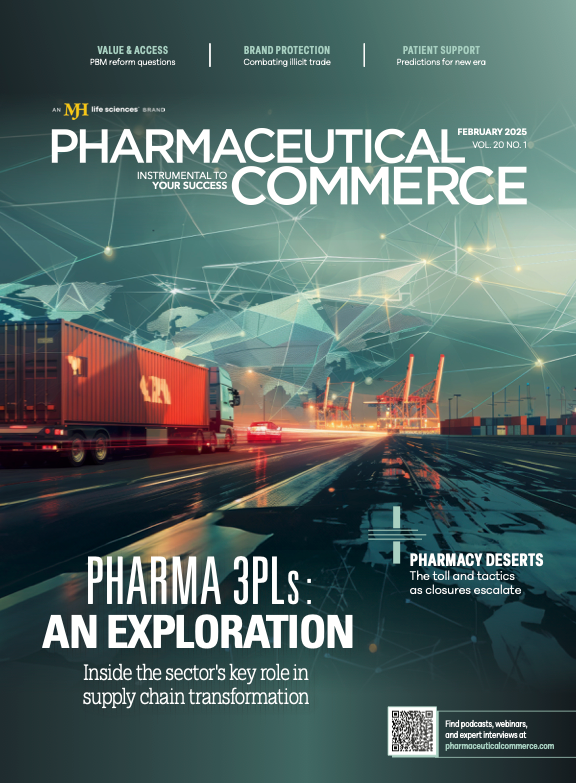Welcome to the 'Dark Side'
Introducing a new Pharma Commerce column focused on combating illicit trade and protecting product integrity—and ultimately patients.

Illicit trade activity (ITA) in the pharmaceutical industry has been on a steady rise globally since the Pharmaceutical Security Institute (PSI) began reporting annual incident statistics more than 22 years ago. According to PSI data, in 2023, pharmaceutical crime hit an all-time high, with 6,897 incidents reported.1 Over the five years of 2019-2023, incidents climbed about 8% yearly. These incidents cut across every therapeutic category and every region of the world. Risks related to ITA include activities such as counterfeiting, diversion, tampering, theft, and trademark infringement. As the problem grows, both the pharma industry and the public sector continue to direct more attention and resources toward dealing with this challenge and protecting patients, along with the integrity of our drug supply chains.
With this challenge in mind, Pharmaceutical Commerce is introducing this new column to address issues related to ITA and to promote a dialogue regarding what we, collectively as an industry and through collaboration with the public sector, can do to combat the problem and protect patients and product integrity.
Unsurprisingly, criminals and bad actors involved in ITA prioritize profits over patient safety and health. They operate in the shadows, clandestinely, seeking to avoid detection, exposure, and accountability for their crimes. They comprise the “dark side” of pharmaceutical commerce, which we will aim to shed light on, stimulate discussion about, and help readers understand best practices, both proactive and reactive, for managing and controlling ITA risk.
It's important to understand that ITA risk, to varying degrees, touches virtually every phase of pharmaceutical product development, manufacturing, and distribution—from “make to take”—and every segment of a product’s lifecycle—from “launch to legacy.” Bad actors spot market opportunities and exploit vulnerabilities throughout the system with alacrity, ingenuity, and sophistication, not to mention greater agility than those of us who play by the rules. Their fraudulent schemes and methods are innumerable and dynamic, and it’s difficult for the good guys, the protectors, to prevail.
To effectively oppose the dark side, we have to think differently than we do when thinking about our legitimate business activities. We have to view our manufacturing and distribution system holistically and through a “product integrity lens,” meaning we have to ask ourselves: how can bad actors exploit and/or circumvent the regulated delivery system to achieve their nefarious aims?
Thus, the objective of this column will be to broaden the aperture of our product integrity lens and look at this problem and solution set from various angles, through case studies and exploration of current events, hot topics, and themes raised by the Pharma Commerce editorial team.
On that note, this issue covers topics such as retail pharmacy closures, pharmacy deserts, and third-party logistics (3PLs). To emphasize my point, all three topics have significant product integrity concerns related to them, which we don’t have the column space to get into now. However, I’ll briefly highlight some of the issues as an example of more to come in this space.
A key knock-on effect of pharmacy closures and subsequent pharmacy deserts is that people turn to the internet for their medicines. From a product integrity perspective, this is generally a bad idea. As the Alliance for Safe Online Pharmacies states on its home page,2 “At any given time, there are around 35,000 active online pharmacy websites—about 95% of which do not comply with applicable laws and pharmacy standards.” Online pharmacies are rife with illicit products, and manufacturers must invest significant resources in online monitoring and enforcement.
In terms of third-party logistics, this is an area that can keep pharmaceutical security leaders up at night. 3PLs are a key area of focus of product integrity programs, mainly due to cargo theft risk, especially in certain parts of the world, such as Brazil, Mexico, and South Africa. Proper vetting, auditing, and oversight of 3PLs is critical, as well as having processes and procedures in place for route planning, incident response, and regulatory compliance, to name a few.
I’m excited to have this forum and opportunity to raise awareness and understanding of product integrity challenges, which should concern everyone in this industry, not just those responsible for mitigating and managing ITA risk. I look forward to engaging with the Pharma Commerce community going forward, and appreciate any feedback, questions, or suggestions readers have for future topics.
About the Author
Sean O’Hearen is Founder and Principal Consultant at 1st Line Partners.
References
1. Latest publicly available PSI data at www.psi-inc.org
2. Alliance for Safe Online Pharmacies home page. https://buysaferx.pharmacy/

The Digital Transformation Reshaping Hospitals and Medication Management
January 20th 2025Despite challenges surrounding communication overload, drug shortages, and cybersecurity risks, this term is revolutionizing medication management and patient care through the use artificial intelligence and predictive forecasting.
Understanding the FDA's Exemption for DSCSA Compliance
November 12th 2024In the quest for achieving full traceability, the exemption applies to certain trading partners under the Act, and postpones enforcement of final compliance requirements while acknowledging progress and ongoing challenges.